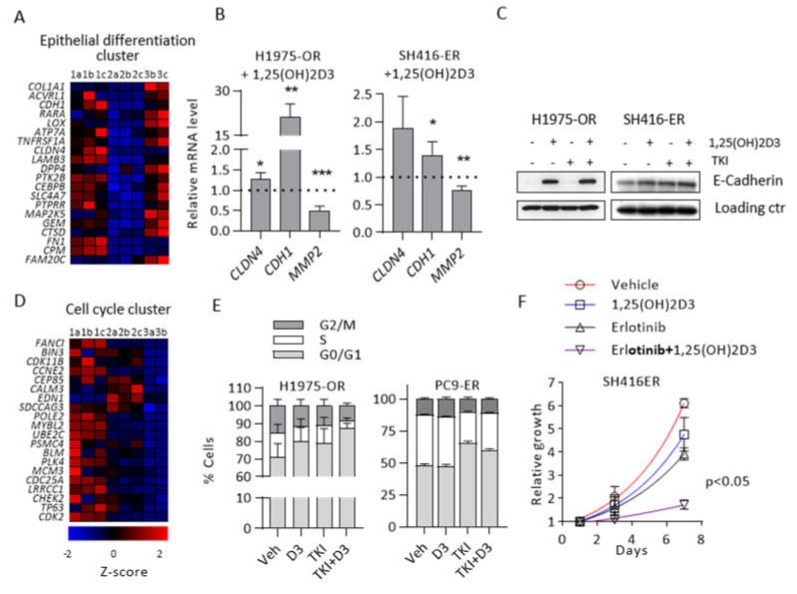Figure 4.
1,25(OH)2D3 promotes epithelial differentiation and cell cycle arrest. RNA sequencing and GSEA were performed in H1975 parental (1a, 1b, 1c) and H1975-OR cells treated with vehicle control (2a, 2b, 2c) or 1,25(OH)2D3 (3b, 3c). (A) Top 20 core enrichment genes from the Epithelial Differentiation cluster. (B). Expression of select epithelial and mesenchymal markers was investigated by qRT–PCR in H1975–OR and SH416–ER cells treated with 1,25(OH)2D3 for 96 h. Expression level in vehicle-treated cells were set to 1 and are represented by the dotted line. * p < 0.05; ** p < 0.01; *** p < 0.001. (C) Cells were treated as indicated for 24 h and expression of E-cadherin was determined by immunoblot. Loading controls: β-Actin (H1975–OR) and α-Tubulin (SH416–ER). Quantitative band analysis is shown in Table S5. (D) Top 20 core enrichment genes from Cell Cycle cluster. (E) Cell cycle distribution was analyzed by flow cytometry. Veh, vehicle control; D3, 1,25(OH)2D3; TKI, osimertinib (1975–OR) or erlotinib (PC9–ER). 1,25(OH)2D3 in combination with osimertinib significantly increased fraction of H1975–OR cells in the G0/G1 phase of the cell cycle (adj. p < 0.005 vs. vehicle) but not in PC9–ER cells. (F) SH416–ER cells were treated as indicated and relative growth was estimated by SRB assay. All experiments were performed in triplicates.

